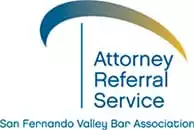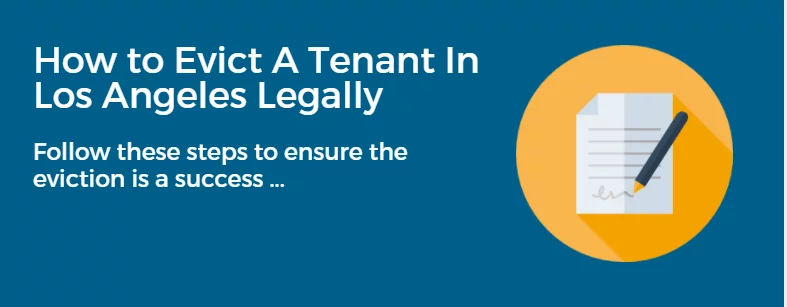How to Evict A Tenant In Los Angeles Legally
Understanding how to evict a tenant in Los Angeles is important. It all starts with clear communication. Follow this process carefully to ensure success.
If you rent your property in California, you need to understand how to evict a tenant in Los Angeles legally.
The lease agreement specifies the details of the lease, including duration, cost, and what’s expected from both you as a landlord and your tenant. This agreement is in place to ensure both parties meet the outlined expectations of the lease.
If your tenant doesn’t meet the expectations outlined in the agreement, you may need to exercise your legal power to evict the tenant.
Today, we’re taking a closer look at the process so you know how to evict a tenant in Los Angeles legally.
Let’s get started…
How to Evict A Tenant in Los Angeles
Evicting a tenant isn’t easy.
We recommend finding a lawyer you trust before starting the process, as this will ensure your efforts work in your favor.
In order to successfully evict a tenant, you need to follow a specific process covered by real estate law. Failure to follow the steps outlined may jeopardize your ability to legally evict your tenant, which will be a waste of time and money.
First, let’s take a look at some of the most common reasons for eviction in California.
1. Evaluate the Issue
It’s important to evaluate the issue before exploring the possibility of evicting your tenant.
Evictions are messy and unpleasant, so this quick step may save you a headache if you find the tenant simply made a mistake. If, however, this issue is ongoing and always seems to be a problem, you just need to confirm the issue is against the terms outlined in your lease agreement.
Here are a few common reasons for eviction in California:
- Failure to pay rent
- Property damage
- Unapproved subletting
- Allowing one or more guests to live with them
- Disturbing neighbors with behavior or noise
- Own pets restricted by the lease agreement
- Expiration of lease
- Illegal activity
- Other violations of your lease agreement
If your tenant has violated the lease agreement in any way, it’s time to confront him or her about it with the intention of correcting the issue.
After evaluating the issue and confirming it’s a violation of your lease agreement, it’s time to confront your tenant.
Let’s take a look at the first step…
2. Ask Your Tenant to Correct the Issue
You may not need to evict your tenant at this point.
Depending on the issue or violation, a simple conversation with your tenant may correct the problem.
Try talking to your tenant about the issue and remind them that they are legally obligated to satisfy the lease agreement. This is often the fastest way to determine whether or not your tenant is receptive and willing to make the correction.
If your tenant responds positively and demonstrates the willingness to make changes, you may not need to take the process any further.
Tenants who understand the severity of the situation will usually take positive action to correct the issue at this point. However, if your tenant avoids you or responds negatively, you may need to take things a little further.
Let’s move on to the next step…
3. Serving the Tenant Notice
Can’t get a hold of your tenant?
It’s not unusual for tenants to avoid their landlords when they know they’re violated their lease agreement. In this case, they’re forcing your hand and probably won’t correct the issue until you take further action.
At this point, California Landlord-Tenant Law allows you to serve the tenant notice.
This is an important aspect of the eviction process, as this demonstrates you understand how to evict a tenant in Los Angeles according to California law. Depending on the issue, you may either serve an eviction notice for non-payment or eviction notice for lease violation. Both of these notices provide the tenant three days to correct the issue.
The notice should state that failure to make corrections will result in your taking steps toward eviction.
The notice must also include:
- The name and address of the tenant(s)
- The date you served the notice to the tenant
- If rent due, the total amount and the name, address, and phone number of the person or financial institution to whom payment should be made, along with the days and hours that person will be available to receive payment
- A certificate of service specifying how you provided the notice to the tenant
- Your signature as landlord
How to Serve An Eviction Notice to Your Tenant
We recommend serving the notice to your tenant in person.
If your tenant refuses to accept the notice, you can leave it on the ground near the tenant. You may also leave the notice with someone else at the property as long as they’re at least 18 years old. In addition, you may also deliver the notice to your tenant’s place of work.
To ensure your tenant receives the notice, you may also mail the notice to the tenant’s address.
As a last resort, you may also exercise the “nail and mail” options, which involves posting the notice to the tenant’s door and mail a copy to the tenant for good measure.
Special Eviction Notice Requirements
In some cases, landlords may be required to provide their tenants a longer time-frame to correct the issue.
Be sure to evaluate the lease agreement before serving an eviction notice as this will indicate the timeframe the tenant is allowed by law.
Here are a few examples:
- Month-to-month lease agreements require 30-days notice
- Tenants who have lived on the property for more than one year are allowed 60 days to correct any issues.
- Government-subsidized housing requires 90-days notice
There are exceptions to these longer notices.
For example, if the tenant is engaging in criminal activity or endangering neighbors, a three-day notice will legally suffice.
If your tenant does not correct the issue within the timeframe provided, you are legally allowed to file an unlawful detainer complaint in court.
Let’s take a closer look…
4. Filing An Unlawful Detainer Lawsuit
In order to legally evict a tenant, you must file an unlawful detainer complaint in court.
An unlawful detainer (eviction) is a civil case filed by a landlord or owner who is suing their tenant to obtain a court order giving the landlord the right to regain possession of the property.
The tenant may raise legal objections to the notice or method of being served, or even the complaint itself. An objection to the grounds for eviction is called a “Demurrer,” and an objection to the service is called a “Motion to Quash Service of Summons.”
The landlord will have to respond to these objections in writing.
If the tenant has a good defense, the court will not move for eviction and the landlord may be ordered to pay for the tenant’s legal fees and court costs.
If the landlord wins, the court will issue a writ of possession that orders the sheriff to remove the tenant from the property if, after five days, the tenant has not left voluntarily.
After the five-day waiting period given to the tenant, the sheriff will return to the property to physically remove the tenant, lock the tenant out, and seize any tenant belongings that have been left on the property. The landlord is not allowed to possess the rental or lease unit until after the sheriff has removed the tenant.
If the tenant is behind on his or her rent, the court may award the landlord unpaid rent along with any damages, court costs, and fees. If the court decides that the tenant acted maliciously in giving up the rental or lease unit, it can award the landlord up to $600 in a penalty. And the judgment against the tenant will be reported on the tenant’s credit report for seven years.
Complicated Situations May Make Eviction More Difficult
There are a few situations that may make the eviction process more difficult.
For example, if your tenant rents an RV or mobile home, you may need additional help executing the eviction process.
You will also find the process more difficult if the property is foreclosed, as there are special protections in place for tenants living in foreclosed properties. In addition, there are special considerations in place if the property is taken over by a bank or investor.
Evictions are serious actions with long-term consequences and need to be handled carefully through the legal system.
Conclusion
If your tenant isn’t meeting the expectations outlined in your lease agreement, it may be time to start the eviction process.
As mentioned, it’s important that you follow all the legal steps required to evict a tenant. Failure to do so will result in a failed attempt and require you to start over, which means more time and money. Understanding how to evict a tenant in Los Angeles the first time around will save you time, money, and spare you the headache of re-starting the process next month.
We recommend you find a lawyer who can help you with the process, as this will ensure your interests are protected.
Looking for help?
Tell us a little about your legal matter and we’ll help you find the right attorney for your needs. Call (818) 213-1849 to learn more or fill out our form to get started.
Are you in search for a certified attorney to represent you?
Let us help you find one today!


